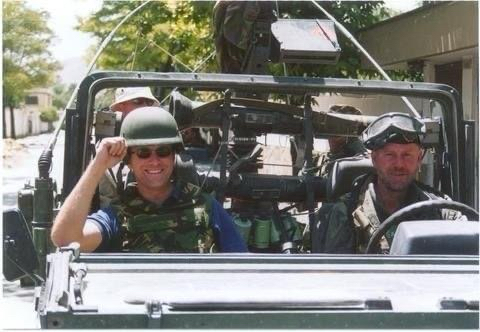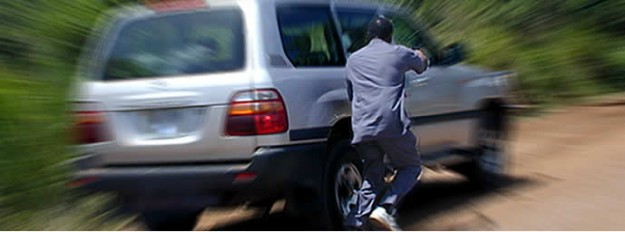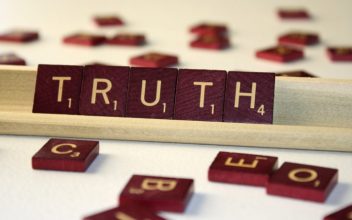My vehicle was surrounded by a gang of eight, armed with guns, bombs, and spears.
From the back of the car I was staring into the muzzle of something that looked like a mix between a vacuum cleaner and an old canon. I could feel the sweat on my forehead as he nervously moved the gaping hole left to right in front of my face.
It was clear that the young rebel fighter did not know what to make of us. Our car must have seemed such easy prey. A white SUV without a military escort. All alone in the Chittagong Hill Tracts in Bangladesh. A peace accord had been signed only weeks ago, but clearly some people hadn’t received the memo.
Our driver was a Bangladeshi. The tribal people did not like Bangladeshis. In fact they had fought a bloody war with them for over 20 years and thousands had lost their lives. As a Dutch diplomat I had been tasked to go around the newly pacified areas to look for ways to build post-conflict peace solutions. Setting up joint tribal–Bangla radio programs, joint governing bodies, community activities. Anything that could help foster trust.
The man with the weird cannon-gun did not look very trusting, especially not after seeing our driver. Suddenly he started gesturing to his colleagues, and all eight of them got really excited. “Bangla! Bangla!”, they shouted. I didn’t like how the situation was evolving at all.
What is it that they wanted? How could I defuse this explosive situation I found myself in? I needed a to find a way to understand his motivations. Why was he doing what he is doing?
From rebels to non-lethal motivation
When I give Octalysis Workshops, Keynote speeches or lead client Kick Off meetings, people often wonder how I got from being a diplomat to being an Octalysis Expert. I often tell them that, in essence, there are no real differences between dealing with rebels and dealing with reluctant, distracted users of an application, workfloor or website.
This may sound strange to you. How can civil wars and user engagement be in the same league? Well, it all boils down to understanding motivations, fears and perceived needs. If I want rebel soldiers to shake hands with a former enemy, the design of the peace program needs to address their deepest feelings and needs. If I want users to get motivated by my Octalysis design, that design needs to address their feelings and needs in a similar vein. Obviously, the consequences of potential failed design are much bigger in war time. I don’t think many people got hurt because our app was not engaging enough.
Nevertheless, my deep interest in behavioral science, and why people do what they do, derives very much from my experiences in war zones and post-conflict areas. Luckily my violent encounters with Rocket Propelled Grenades, exploding tank mines on airport runways, car jackings and public lynchings did not damage me too much. They did spike my interest in human behavior and empowered me to crawl into the skin of the people involved and really feel their experience.
Feeling the Experience
When I design for true engagement, I need to “feel the experience.” It’s almost an artistic feeling and fully immersive. Creating Octalysis Gamification design is not just adding a few cool mechanics in the hope of creating a nice dopamine or serotonin spike. No. When you design, you ARE the user. You feel what they feel. You fear what they fear. You need what they need.
A long time ago I was carjacked in Nairobi. Carjacking is when they steal your car with you in it, often using weapons. It was an awful experience. It was violent. There were guns and threats. Both my companion and I were hit violently, with blood crawling down our faces. Although I was definitely scared, I somehow I found a way to get to talk to the criminals. I immediately told them they could have whatever we possessed. At the same time, I wanted to create a social connection.
So I talked about my underwear and other non-valuables that were in my suitcase. I wanted them to feel connected with me. They were scared I am sure (and they would surely die if caught by the police) so making that connection on harmless things that we all possess helped to ease the tensions somewhat. I tried to feel what they were feeling and design my responses in a way that made me look human. Not just another victim, but a fellow human being. In Octalysis terms: I crafted some “Core Drive 5: Social Influence and Relatedness” in their “carjacking experience.”
In the end we got lucky, and we were released. Did my “design” help? It may have, it may not have. At minimum I got some very intensive training in analyzing emotions and designing features that connected with these emotions. I carried that experience with me while working in other parts of Africa and in Afghanistan, where I made other interesting encounters that blew my mind (well, almost).
Back to the real world
I did not last in diplomacy. The conflict world was too stressful in the end, and the Ministry (where I was posted for a while) too boring and bureaucratic. Civil war turned to political battles. It was time to leave.
I joined the private sector and worked for PricewaterhouseCoopers, still focusing on how to create engagement in the United Nations, World Bank and developing nations. The journey continued via HR and virtual HR engagement solutions till the point that I met Yu-kai Chou. We clicked instantly and The Octalysis Framework blew me away. Soon enough we had founded The Octalysis Group and the rest is (successful) history.
I do carry the lessons learned with me from the violence and war I experienced. How it forced me to really feel what the other is feeling. How it forced me to design to other people’s needs, fears, and wants.
The good thing is: nobody has to experience the same things as I have, in order to know what human motivation is made up and how you need to design for it. The Octalysis Framework makes all of this insightful already. In fact, I wish I had the Framework with me 20 years ago. It would have been a game-changer for sure.
And what happened with the Tribal Rebel?
Well we got lucky (again). Our Bangladeshi driver survived, we managed to get the rebels to smile by applying more 8 Core Drive “designs,” so they let us through unharmed. We were allowed to continue on the road with peace. Little did I know that that road finally would turn into an exciting Octalysis journey, where I could use my experience to help clients on a daily basis.
In a sense I am grateful for the mishap that happened in my life. I am now able to apply my lessons in motivation for the benefit of companies, governments and NGOs.
What doesn’t kill you makes you stronger. Life is good.





